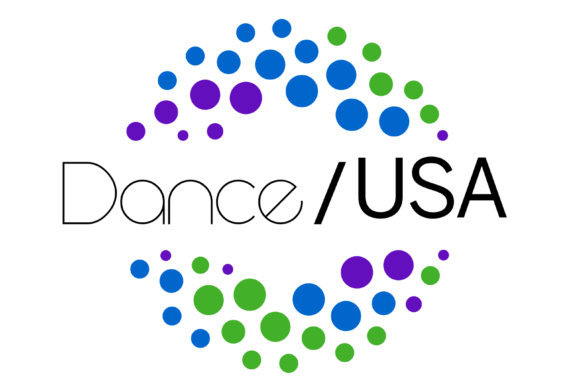REAL TALK: Race and Dance at the Dance/USA Conference
During the Dance/USA 2015 conference held in Miami from June 17-20, race
and diversity were hot topics featured in multiple breakout sessions.
Designed as freeform discussions between panelists and audience members,
the Dance/USA breakout sessions provided an excellent forum for the
sometimes personal and emotional experiences surrounding the topic of
race in the dance world. Two consecutive sessions, collectively titled
“Race and Dance Townhall: REAL TALK,” were held Thursday, June 18.
The Dance Field Gives Back
Missed Dance/USA’s Annual Conference in Miami in June 2015 and want a rundown on what happened? Or need a refresher as your new season gets into gear? Read this report, with links to the plenary sessions, on key events and topics from Dance/USA’s gathering of world class artists, administrators, managers and collaborators, exclusively in From the Green Room.
LEADERSHIP CORNER: Andrea Lodico Welshons, Executive Director, KEIGWIN + COMPANY
From the Green Room‘s Leadership Corner continues with a conversation with KEIGWIN + COMPANY’s Executive Director Andrea Lodico Welshons. Read about how Welshons and Artistic Director Larry Keigwin view their working relationship as symbiotic and collaborative and Welshon’s recipe for relatively accelerated, high-visibility growth for the company.
Marketing Misty: Missed Opportunity or Business as Usual?
The much anticipated announcement of Misty Copeland’s promotion to
principal dancer at American Ballet Theatre was heralded with
media fanfare – a breaking news banner across the
homepage of The New York Times, coverage on the major television news networks, and a hastily arranged, widely viewed press conference. But
the actual press release from American Ballet Theatre was routine.
Arriving as expected at the end of the season, it presented company
promotions in the order of position and alphabetically, meaning that
Copeland’s name was second, behind fellow new principal Stella Abrera.
There was no mention of Copeland’s place in history as the first
African-American principal ballerina at the company. Read on for Karyn Collins exploration as to what’s in store for Copeland beyond the media hype.
Bringing Down Barriers
A discussion on expanding the boundaries of inclusiveness featuring illustrious members of the first generation of non-white arts leaders, among them Dance Theatre of Harlem’s Arthur Mitchell, Ballet Hispanico founder Tina Ramirez and dancer, choreographer and actress, Carmen de Lavallade on the increasing necessity for arts managers and organizations to create arts programs and field arts administrators who “look like America.” Read author/editor Robert Bettmann’s report on this 2015 panel of experts, exclusively in From the Green Room.
Dance/USA 2015 Ernie Awardee Linda Shelton
Linda Shelton receives the 2015 Dance/USA “Ernie” Award for
“an individual working ‘behind the scenes’ within the infrastructure of
the dance field. A long-time arts administrator, Shelton has a long-view of the dance field through her extensive work with the Joyce Theater in Manhattan’s Chelsea neighborhood. A current trustee and former chair of Dance/USA’s board, Shelton has spent a career serving the non-profit concert dance world. Listen in as dance writer and scholar Mindy Aloff and Shelton talk about her work.
Trisha Brown: Choreographer, Innovator, Humanist, Dance/USA Honor Awardee
The dance world lost an icon this week: the audacious and visionary Trisha Brown. Former Dance Magazine editor, writer, and Trisha Brown dancer Wendy Perron reflected on Brown’s work, her kineticism, intellect, and perceptual sensibility.
Toby Ansin, Miami City Ballet Founder, Receives Dance/USA’s Champion Award
This June 2015, long-time Miami City Ballet supporter, and founder, Toby Ansin, receives one of Dance/USA’s highest honors, the Champion Award. Dance/USA pays tribute to Ansin’s believe that an excellent ballet company could flourish in the South.
Raven Wilkinson: 2015 Dance/USA Trustee Awardee
Raven Wilkinson helped change the complexion of the classical ballet world. Notable as the first African-American ballet dancer in a major American ballet company, Dance/USA remembers her as a groundbreaker.
Leadership Corner: C. Brian Williams, Founder/Executive Director, Step Afrika!
Leadership Corner continues with this conversation featuring Brian Williams, founder and director of Step Afrika! the Washington, D.C.-based troupe dedicated to bringing step dance to the concert state here in the United States and around the world. Williams says: “First came the artistic opportunity, then came the business. For me, the
question was, ‘How do I make this happen? What do I need to do and what
are the first steps?’ I wanted to share stepping with the world. Making money really wasn’t the idea. If money had been the primary
motivation, then I am sure I wouldn’t have gotten too far. Instead … it
was the idea to step all across the continent of Africa, learn
traditional dances, and explore the nexus between stepping and
traditional African culture that really motivated me to launch Step
Afrika! The question became: ‘How do I make that happen? And what are
the opportunities?’” Read on for more.

